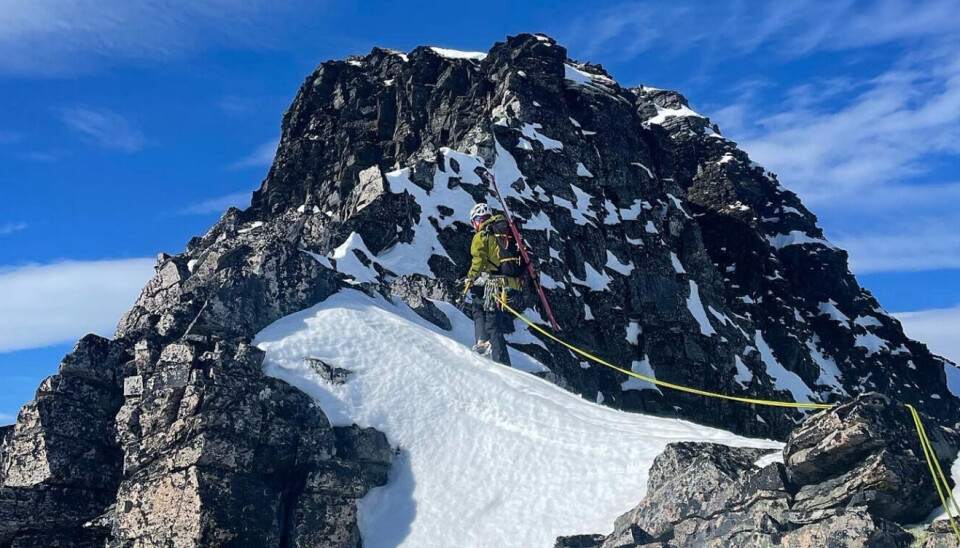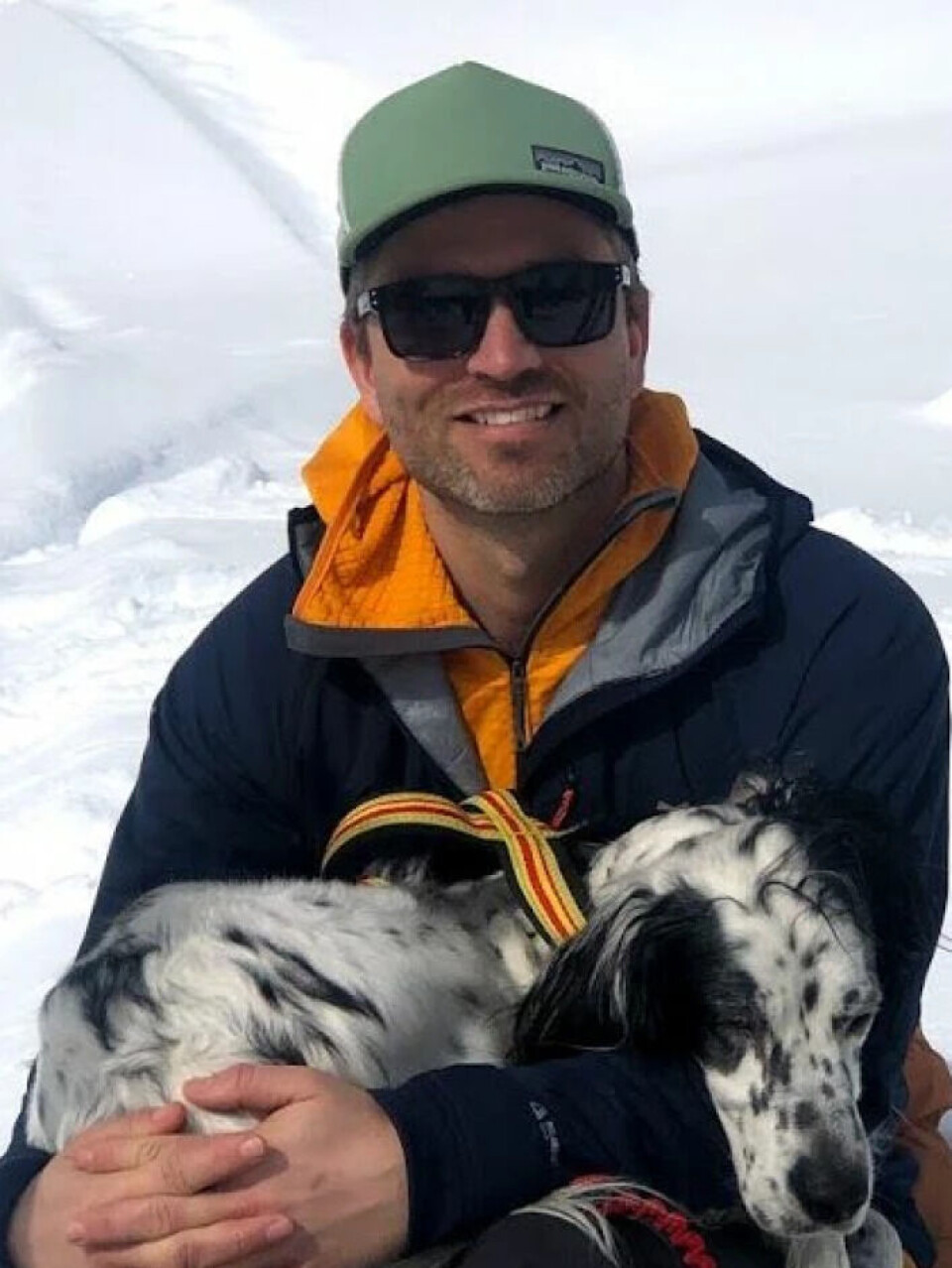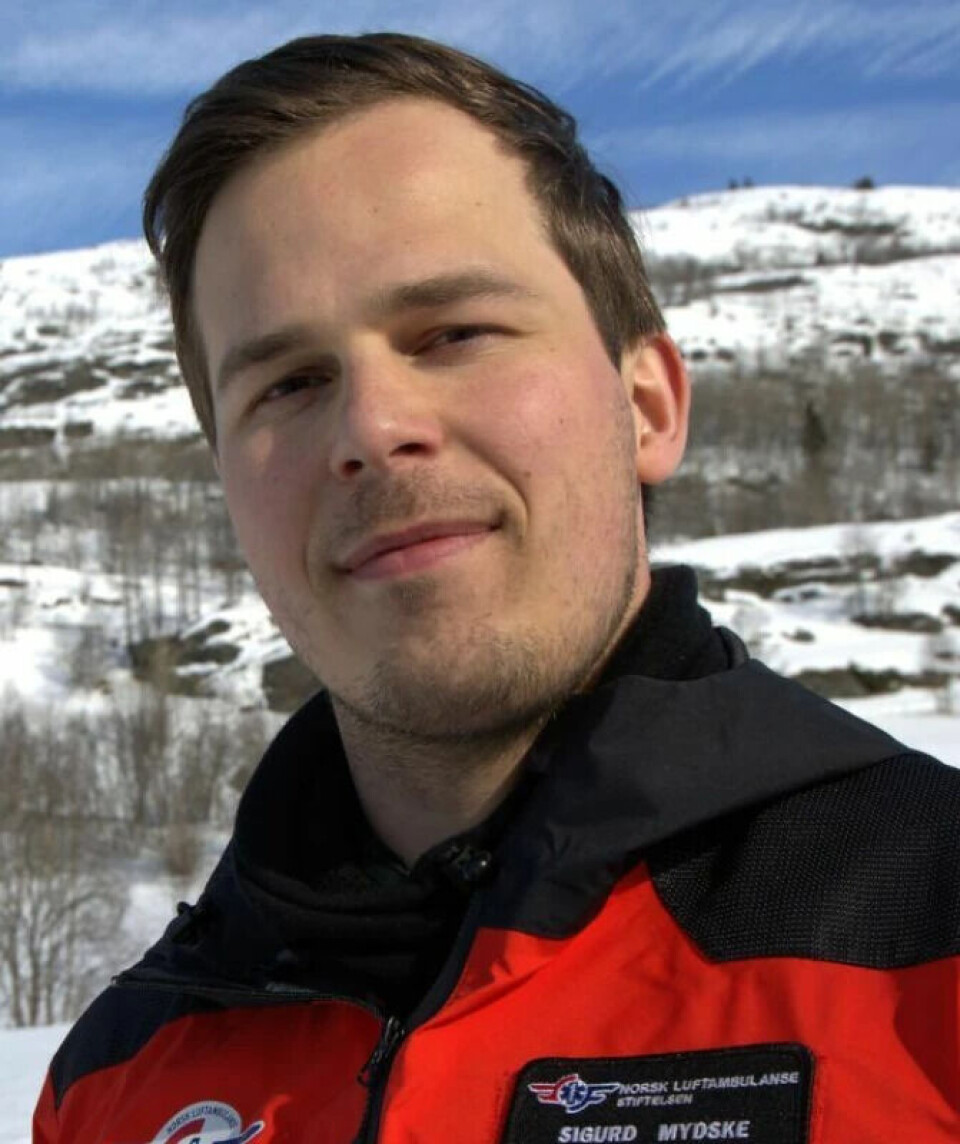THIS ARTICLE/PRESS RELEASE IS PAID FOR AND PRESENTED BY SINTEF - read more

This is how you save a life in cold temperatures
A drop in the body's core temperature from 36 to 35 degrees Celsius can have serious consequences. But why is it that cold temperatures enable some patients to survive without permanent harm?
Doctor Sigurd Mydske and research scientist Øystein Wiggen at SINTEF explain what you need to know if you find yourself in an accident in the mountains, on the road, or elsewhere when it's cold.
As a physiologist, Wiggen conducts research into what the human body can tolerate under low-temperature stress. Mydske is a doctor and researches mountain medicine at the Norwegian Air Ambulance Foundation.
Together, they are looking into finding the most optimal way of treating patients suffering from hypothermia.
“Recent and robust knowledge in this field may have life-saving significance for patients who become involved in anything from avalanches to traffic accidents, as well as those who find themselves injured and unable to move on a cold cellar floor,” Wiggen says.
However, there is already a lot that doctors and researchers are certain about when it comes to applying know-how to save lives in cold environments.

How cold do we have to become before it is considered dangerous?
“A person can be said to be hyothermic when their body temperature falls below 35 degrees Celsius. To be precise, our core temperature is defined as that of the blood in our right cardiac ventricle," Wiggen says.
Hypothermia is a condition that can become very dangerous. However, it usually takes some time before our core temperature becomes so low, the researcher says.
Why is it so dangerous to become cold? After all, some people swear by cold showers
According to Sigurd Mydske, a large drop in body temperature can be dangerous for many reasons. Firstly, our blood platelets cease to function normally when our bodies become hypothermic. This makes it difficult to stop both external and internal bleeding.
No wonder that sustaining an injury in cold conditions can be very serious.
Secondly, low temperatures can be harmful in their own right. In the event of an accident, keeping the injured person warm is one of the most important things you can do.
“Even a drop in core temperature from 36 to 35 degrees may have serious consequences. Our body temperature helps to control the speed of all the chemical processes taking place in our bodies. When we become hypothermic, everything begins to slow down. Our vital organs such as the heart, lungs, and brain function less efficiently, and the blood’s ability to coagulate is impaired,” Mydske says.
There is also a significant increase in the risk of cardiac arrest.
What actually happens in a hypothermic body?
Wiggen explains:
“Firstly, the body has built-in mechanisms that work to prevent it from becoming seriously hypothermic. These include reducing blood supply to the peripheral parts of the body while increasing supply to the internal organs."
He goes on to say that the most important parts of the body are thus kept warm and continue to receive oxygen and nutrients. This also means that we feel the cold first on our noses, hands, and feet.
Secondly, the body starts to shiver. Shivering stimulates energy use and leads to increased heat production.

“Shivering in itself is not dangerous. It is in fact a sign that the body is doing its job. Danger arises when a person has become so cold that he or she stops shivering,” Mydske says.
Our temperature controls most of the processes that take place in our bodies. Our heartbeat and breathing slow down and become less stable. This also applies to the brain and our consciousness.
The brain gradually functions less effectively, and we become confused, lethargic, aggressive in part, and eventually unconscious. Our rate of metabolism, which uses oxygen to convert our food and drink into energy, declines. Our blood platelets become less 'sticky' and adhere less well. This increases the risk of bleeding.
"This is why, after ensuring that a patient’s airways are clear and applying CPR, the most important thing is to keep them warm,” he says.
How long does it take to become dangerously cold?
“It’s impossible to say. It depends on so many factors such as air temperature, wind conditions, your clothing, age, and body shape. So, together with your first aid kit, it’s just as important to carry a good insulating mat, extra clothes, and a bivouac bag in your pack,” Wiggen says.
A bivouac bag is a cross between a sleeping bag and a one-person tent.
A good rule of thumb for a healthy person is that if you fall into cold water and manage to keep your head above the surface, you will have about 30 minutes before you become hypothermic. That is to say, when your body temperature falls below 35° C.
“This is why it is so important to be accompanied, and to carry a rope, ice safety picks, and warm clothes when skiing or skating across a frozen river or lake. In the spring, when the snow and ice are starting to melt, it makes sense to bear these things in mind,” he says.
Some say that you shouldn’t try to warm up hypothermic patients. Others say the opposite. What is the right thing to do?
“The established idea that you shouldn’t try to warm up hypothermic patients goes back to the 1950s. This so-called knowledge is derived from old myths for which there is no scientific evidence. Unfortunately though, many people still believe this to be true,” Mydske says.
According to Wiggen, contemporary advice is to adhere to the following drill:
- Insulate the patient from the cold by removing them from contact with any snow or ice. Use a rucksack or a mat as insulation. Everything helps.
- Place a moisture barrier as close against the patient as possible. In practice, this means placing the patient in a zipped-up wind sack to prevent losing moisture from the body. Evaporation cools the body down. This is why we sweat when we become too hot. Then, get the patient into a sleeping bag or under a wind sack. The more insulation you can provide, the better.
- In all situations you must try to provide the patient with ‘active warming’. Active warming means providing warmth using devices such as heating mats. However, we still do not know exactly what effect this has. But, because it is normal for the body to be warm, we should always be looking to insulate the patient and provide active warmth.
“But be careful. A patient being warmed in this way must be closely monitored in order to prevent burns,” Mydske says, going on to add:
“If you’re caught in bad weather in the mountains and are becoming hypothermic, you may only need a couple of bin bags to save your life. Jump into a bag, pull it over your head and make a hole to breathe through. Plastic bags can withstand harsh conditions much better than thin rescue blankets. They are windproof and cost next to nothing. Doing this will prevent heat loss due to evaporation and will have a big impact on your temperature."
Wiggen says that if we can keep the wind out, we can create a safe microclimate that makes it very difficult to freeze to death. A bivouac bag can save your life.
"Be aware that thin foil emergency blankets do not have the same effect. They are difficult to use both as a moisture barrier and as protection against the elements because they tend to become caught by the wind," he says.
Foil blankets may be effective in reflecting radiated heat, but when we are clothed, the amount of heat we lose by radiation is very small, so the effect is minimal.
This is why more and more rescue services are no longer using the foil blankets that we commonly see in the news coverage of disasters such as the recent earthquakes in Turkey and Syria.
However, specially-designed bags are available that are well suited to this purpose. They are light, thin and moisture-proof, and reflect the heat radiated from the body.
"They are sold in sports retailers that offer a good selection of mountain equipment,” Wiggen says.
“We doctors always say that a patient isn’t dead before they are both warm and dead," Mydske says.
If a patient is becoming hypothermic, but the heart is still beating on its own, it is important to provide them with as much warmth as possible.
If the patient’s heart has stopped beating, then you must start CPR. It is important not to give up before the patient has arrived at the hospital.
"In any event, it will not be possible to warm up such patients outside a hospital, so it is less important to make the effort to provide them with warmth," he explains.
Why is it that some people survive because of the cold?
“Paradoxically, it can happen that cold temperatures actually contribute towards a person surviving. For example, in cases of falling into cold water,” Wiggen says.
He explains that when our bodies are cooled down, all our internal processes function more slowly. Our brains are able to tolerate long periods starved of oxygen before our condition becomes critical.
"However, in spite of the fact that the cold can save us in some situations, most incidences of prolonged submergence in cold water will result in unfortunate outcomes,” he says.
Is there anything we don’t know about the treatment of hypothermic patients?
“We can’t say for certain that we have identified the optimal treatment approach to so-called pre-hospital warming of hypothermic patients. We are aware of the basic principles, but we need better equipment to facilitate active warming and, not least, methods for the easy and accurate measurement of body temperature out in the field," Øystein Wiggen says.
He informs us that this is something they are currently working on. In a few years’ time, hopefully, rescue personnel will be able to reverse hypothermia even more effectively and thus deliver warm patients to the hospital.
Why do we sometimes feel warm immediately before we actually die of cold temperatures?
“Our brain controls the body’s physiological processes. It regulates the dilation of our arteries when we are hot, and their contraction when we are cold. But when this centre in our brains becomes cold, this mechanism stops working," Sigurd Mydske says.
In a seriously hypothermic body, the floodgates are opened and blood flows out into the hands and feet. Tense muscles are allowed to relax.
"The patient experiences this phenomenon as warmth, but in fact the body is losing heat. This, in combination with loss of brain function, explains why some people who have frozen to death have been found with their clothes removed,” he says.
See more content from SINTEF:
-
New study: Even brand-new apartments in cities can have poor indoor air quality
-
Fresh hope for patients with chronic inflammatory bowel disease
-
Testing a giant ship: May take five kilometres to stop
-
A robot is helping researchers hunt for the best cancer warriors
-
Locomotives that run on diesel can be electrified
-
Where kelp is being turned into lab-grown meat





































